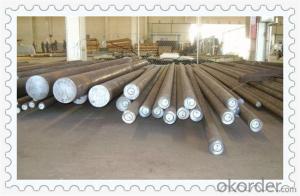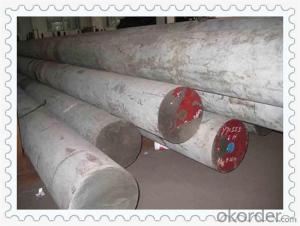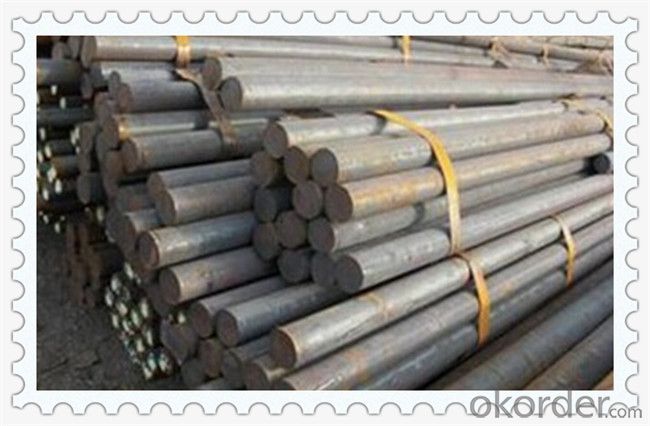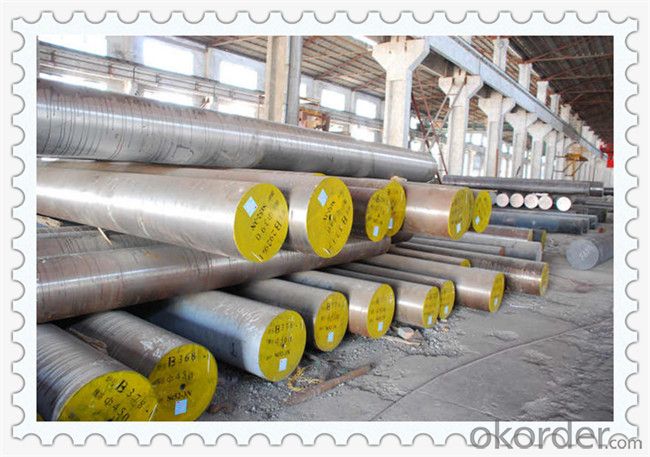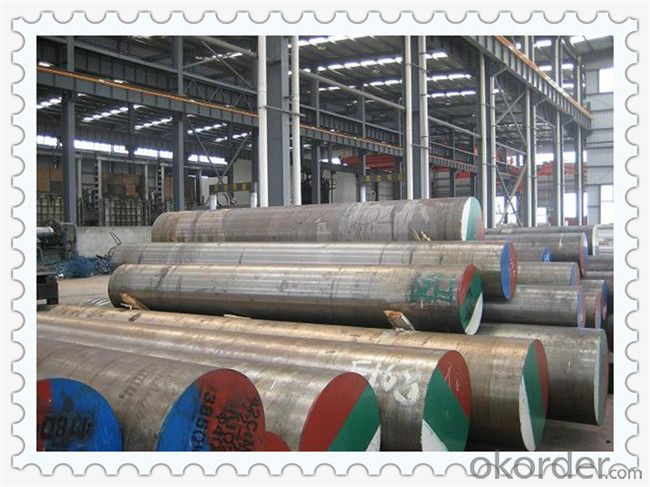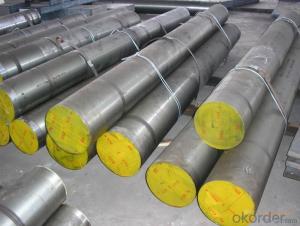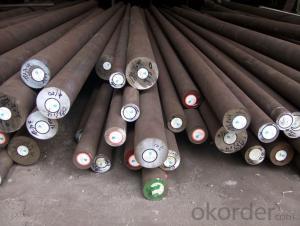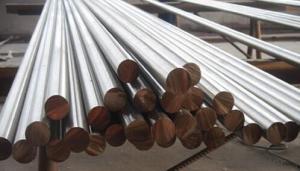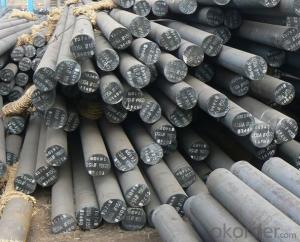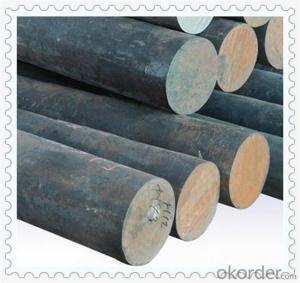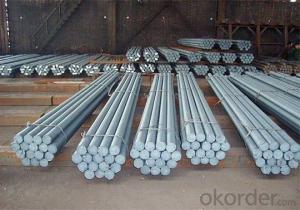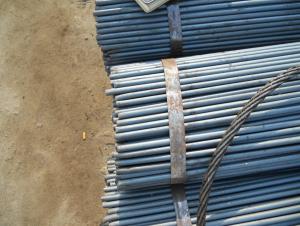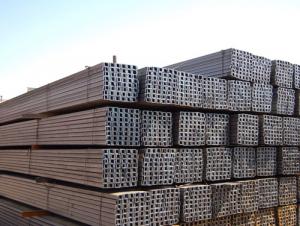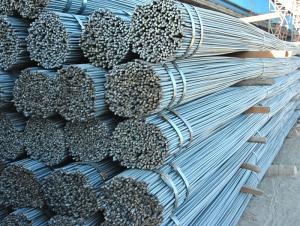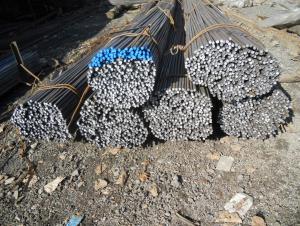ASTM 5140 Alloy Steel Round Bar
- Loading Port:
- China main port
- Payment Terms:
- TT OR LC
- Min Order Qty:
- 30 m.t.
- Supply Capability:
- 10000 m.t./month
OKorder Service Pledge
OKorder Financial Service
You Might Also Like
ASTM 5140 Alloy Steel Round Bar
Technical Paramenters
Chemical Composition | Mechanical Properties (In Quenched & Tempered State) | ||
C | 0.37-0.44 % | Tensile strength(MPA) | ≥980(100) |
Si | 0.17-0.37 % | Yield strength (MPA) | ≥785(80) |
Mn | 0.50-0.80 % | Elongation (δ5/%) | ≥9 |
Cr | 0.80-1.10 % | Reduction in Area (ψ/%) | ≥45 |
Ni | ≤0.30 % | Impact (J) | ≥ 47 |
P | ≤0.035 % | Impact toughness value αkv (J/cm2) | ≥59(6) |
S | ≤0.035 % | Hardness | ≤207HB |
Cu | ≤0.030 % | ||
Products Show
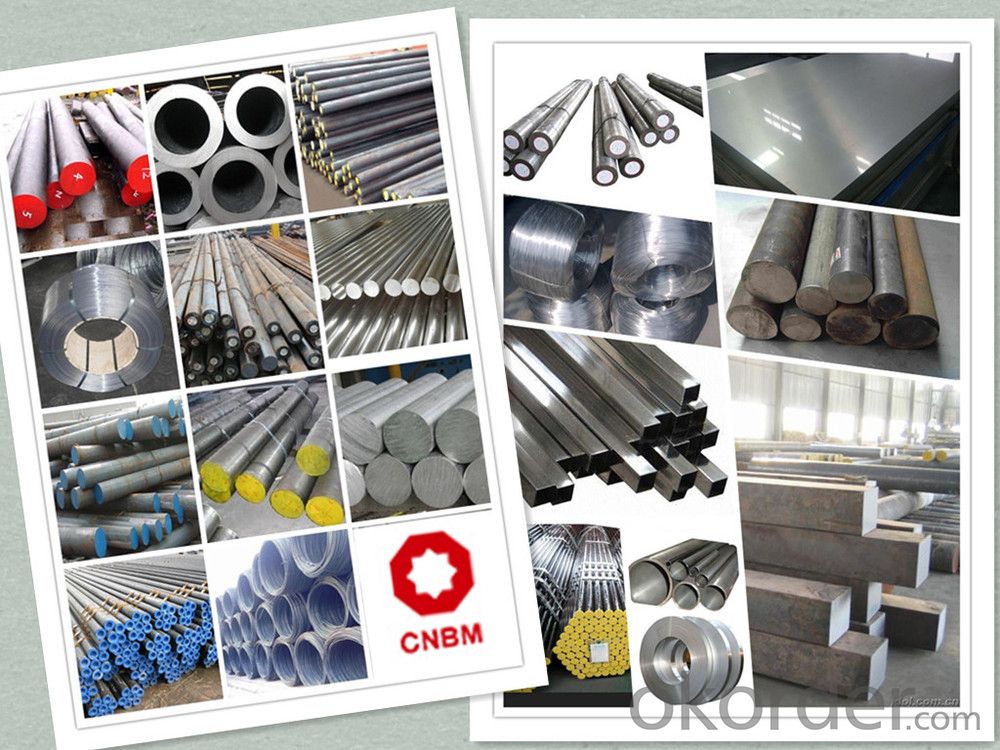
Product Overviews
| Product Name | Typical Grades | Diameter(mm) | Standard adopted |
| Carbon Steel | 20 (1020/S20C/C22) | Ø16-Ø300 |
GB/SAE/JIS/DIN
|
| 40 (1040/S40C/C40) | |||
| 45 (1045/S45C/C45) | |||
| Bearing Steel | GCr9 (51100/SUJ1) | Ø12-Ø250 | |
| GCr15 (52100/SUJ2/100Gr6) | |||
| GCr9SiMn (A485-Gr.1/SUJ3) | |||
Cr-Mo Steel | 20Cr (5120/SCr420H/20Cr4) | Ø12-Ø250 | |
| 40Cr (5140/SCr440/41Cr4) | |||
| 42CrMo(4140/SCM440/42CrMo4) | |||
| Gear Steel | 20CrNiMo | Ø16-Ø600 | |
| 20CrMn(5115/SMnC420/20MnCr5) | |||
| 20CrNiMo(8620/SNCM220/20CrMiMo2) |
Application
| Carbon Steel | Mold bottom, Plastic mold, Construction machinery parts Automobile parts, Security grills, Screens, Construction |
| Bearing Steel | Aerospace, Navigation, Nuclear energy, Chemical industry Electronic information, Petrochemical, Instrument and meter Transportation |
| Cr-Mo Steel | Mechanism & Fasteners gear, Stressed components for vehicles Engines and machines, Parts of larger cross-section |
| Gear Steel | All kinds of gears, Statically and dynamically stressed component for vehicles Engines and machine, Larger cross-section parts, Crankshafts |
Work Shop
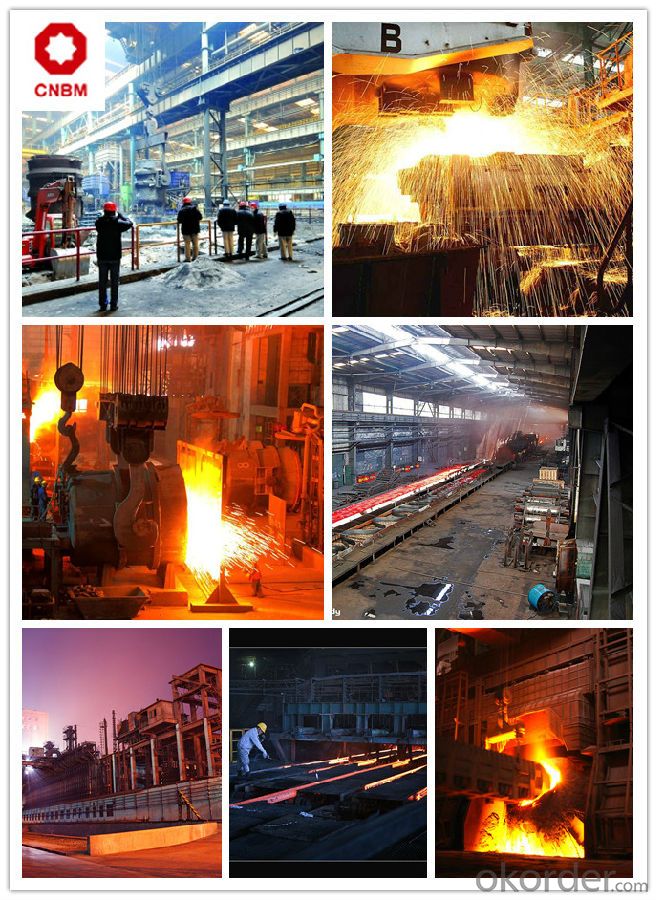
Company Information
CNBM International Corporation is the most important trading platform of CNBM group.
Whith its advantages, CNBM International are mainly concentrate on Cement, Glass, Iron and Steel, Ceramics industries and devotes herself for supplying high qulity series of refractories as well as technical consultancies and logistics solutions.


FAQ
1, Your advantages?
professional products inquiry, products knowledge train (for agents), smooth goods delivery, excellent customer solution proposale
2, Test & Certificate?
SGS test is available, customer inspection before shipping is welcome, third party inspection is no problem
3, Factory or Trading Company?
CNBM is a trading company but we have so many protocol factories and CNBM works as a trading department of these factories. Also CNBM is the holding company of many factories.
4, Payment Terms?
30% TT as deposit and 70% before delivery.
Irrevocable L/C at sight.
5, Trading Terms?
EXW, FOB, CIF, FFR, CNF
6, After-sale Service?
CNBM provides the services and support you need for every step of our cooperation. We're the business partner you can trust.
For any problem, please kindly contact us at any your convenient time.
We'll reply you in our first priority within 24 hours.
Packaging & Delivery
1, Packaging: seaworthy package or as required
2, Delivery: 35-45 days or based on quantity
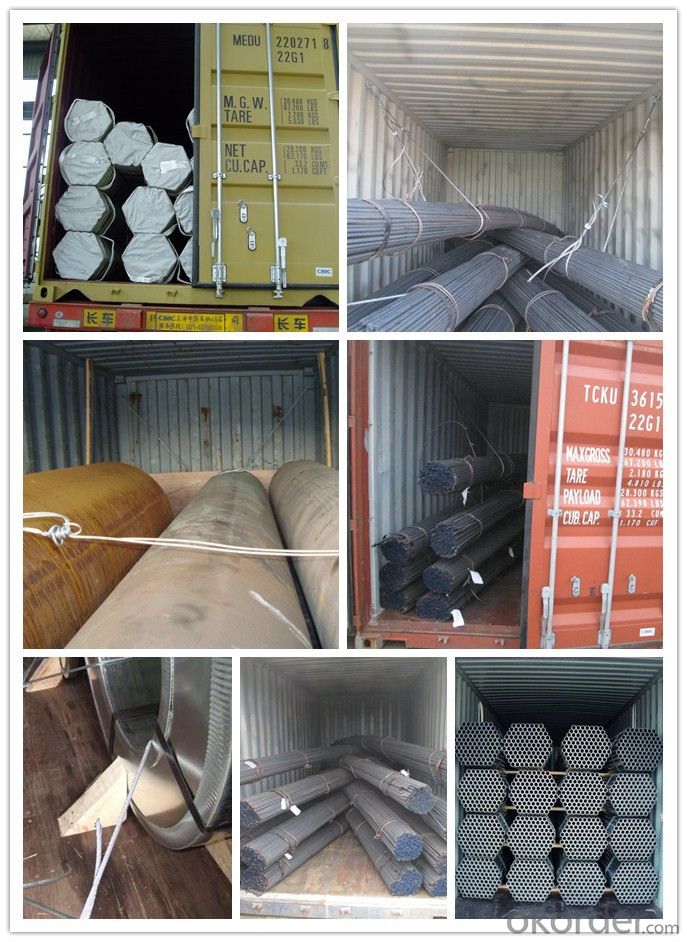
- Q: What are the different welding techniques for steel round bars?
- Steel round bars can be welded using various techniques. Here are some commonly used ones: 1. Stick welding, also known as Shielded Metal Arc Welding (SMAW): This technique involves using an electrode coated in flux to create an electric arc between the electrode and the workpiece. The base metal melts, resulting in a weld. 2. Gas Metal Arc Welding (GMAW), commonly referred to as MIG (Metal Inert Gas) welding: In this technique, a wire electrode is fed through a welding gun. It combines with a shielding gas to create a weld. 3. Flux-Cored Arc Welding (FCAW): Similar to GMAW, FCAW uses a continuously fed electrode. However, instead of a solid wire electrode, it uses a tubular electrode filled with flux. This flux protects the weld and adds strength. 4. Tungsten Inert Gas (TIG) welding, also known as Gas Tungsten Arc Welding (GTAW): This precise technique involves using a non-consumable tungsten electrode to create an arc. Additional material may be added using a filler rod. 5. Submerged Arc Welding (SAW): This technique is suitable for heavy-duty applications, such as welding steel round bars for structural purposes. The arc and welding zone are submerged in granular flux, providing protection and deep penetration. Each technique has its advantages and is suitable for specific applications. Factors like round bar thickness, required weld strength, and accessibility of the welding site should be considered when selecting the appropriate technique for a strong and durable weld on steel round bars.
- Q: What are the advantages of using cobalt-alloy steel round bars?
- There are several advantages of using cobalt-alloy steel round bars. Firstly, cobalt-alloy steel has excellent strength, hardness, and wear resistance, making it suitable for applications that require durability and long-lasting performance. Additionally, cobalt-alloy steel has high temperature resistance, making it ideal for use in high-temperature environments. Furthermore, cobalt-alloy steel offers excellent corrosion resistance, making it suitable for applications in harsh and corrosive environments. Lastly, cobalt-alloy steel round bars can be easily machined and fabricated, offering flexibility and ease of use for various manufacturing processes.
- Q: What are the advantages of using bearing steel round bars?
- There are several advantages of using bearing steel round bars. Firstly, bearing steel has high hardness and wear resistance, which ensures durability and longevity of the bearings. Secondly, bearing steel has excellent dimensional stability and can withstand high temperatures, making it suitable for applications with heavy loads and high-speed rotations. Additionally, bearing steel round bars have excellent surface finish and low friction coefficient, resulting in smooth and efficient operation. Lastly, bearing steel has good corrosion resistance, reducing the risk of rust and prolonging the lifespan of the bearings.
- Q: Difference between forging and round steel
- The castings need to be uniform in each piece without any porosity, excess space, inclusions, or other defects. The component produced by this method has a high ratio of strength to weight. These elements are usually used in aircraft structures.
- Q: How do I choose the right grade of steel round bar for my application?
- Choosing the right grade of steel round bar for your application requires careful consideration of several factors. Here are some steps to help you make an informed decision: 1. Determine the application requirements: Start by understanding the specific demands of your application. Consider factors such as load-bearing capacity, corrosion resistance, temperature resistance, and any specific industry standards or regulations that may apply. 2. Identify the required mechanical properties: Depending on the application, you may need specific mechanical properties such as strength, hardness, toughness, or ductility. Identify the required values for these properties and prioritize them based on their importance to your application. 3. Consider the environmental conditions: Evaluate the conditions in which the steel round bar will operate. This includes factors such as exposure to moisture, chemicals, high temperatures, or abrasive environments. Some grades of steel are more resistant to corrosion or heat, making them more suitable for specific conditions. 4. Consult with experts: If you are unsure about the best grade of steel for your application, seek advice from professionals such as metallurgists, engineers, or suppliers. They can provide valuable insights based on their expertise and experience. 5. Compare different grades: Once you have a clear understanding of your application requirements, research and compare different grades of steel round bars available on the market. Consider factors such as composition, manufacturing process, and specific properties of each grade. Look for grades that closely match your requirements. 6. Review industry standards and specifications: Check if there are any industry standards or specifications that dictate the use of specific grades for your application. These standards can provide guidance and ensure compliance with safety and quality requirements. 7. Evaluate cost-effectiveness: Evaluate the cost-effectiveness of different grades by considering factors such as initial purchase cost, maintenance and replacement costs, and the overall lifespan of the steel round bar. 8. Conduct tests and trials: If possible, conduct tests or trials using different grades of steel round bars to assess their performance in your specific application. This can provide valuable data and help you make a more informed decision. By following these steps and considering all relevant factors, you can choose the right grade of steel round bar that will meet the demands of your application efficiently and effectively.
- Q: What is the difference between a hot rolled and a turned steel round bar?
- The main difference between a hot rolled and a turned steel round bar lies in the manufacturing process and the resulting characteristics of the finished product. A hot rolled steel round bar is produced by heating a billet or ingot of steel to a high temperature and then rolling it into the desired shape. This process allows for the steel to be formed and shaped easily, resulting in a bar with a rough surface and a slightly rounded or irregular shape. Hot rolling also helps to improve the overall strength and toughness of the steel, making it suitable for a wide range of applications. On the other hand, a turned steel round bar is produced by machining a hot rolled or cold drawn bar on a lathe. This process involves removing material from the surface of the bar using cutting tools, resulting in a smooth and precise finish. Turning also allows for greater dimensional accuracy and control over the final shape and size of the bar. In terms of surface finish and dimensional accuracy, a turned steel round bar generally offers a higher level of precision compared to a hot rolled bar. The turned bar has a smoother surface with fewer imperfections, making it ideal for applications where appearance and aesthetics are important. Additionally, the turned bar typically has tighter tolerances, ensuring consistent dimensions throughout its length. The choice between a hot rolled and a turned steel round bar depends on the specific requirements of the application. Hot rolled bars are commonly used in construction, manufacturing, and general engineering applications where strength and toughness are crucial. Turned bars, on the other hand, are often used in industries such as automotive, aerospace, and precision machining, where a high level of surface finish and dimensional accuracy is required. In summary, the difference between a hot rolled and a turned steel round bar lies in the manufacturing process and the resulting characteristics. Hot rolled bars offer strength and toughness, while turned bars provide a smoother surface finish and greater dimensional accuracy. The choice depends on the specific needs of the application.
- Q: Can steel round bars be used in the manufacturing of couplings?
- Yes, steel round bars can be used in the manufacturing of couplings.
- Q: What are the advantages of using nickel-tin alloy steel round bars?
- There are several advantages of using nickel-tin alloy steel round bars. Firstly, nickel-tin alloy steel has excellent corrosion resistance properties. This makes it ideal for applications where the round bars will be exposed to harsh environments or corrosive substances. The addition of nickel and tin enhances the overall durability and longevity of the round bars, ensuring they can withstand prolonged exposure to moisture, chemicals, and other corrosive elements. Secondly, nickel-tin alloy steel round bars offer superior strength and toughness. The combination of nickel and tin in the alloy composition enhances the overall mechanical properties of the bars, making them highly resistant to deformation, bending, and breaking. This makes them suitable for demanding applications that require high strength and durability, such as in construction, aerospace, and automotive industries. Additionally, nickel-tin alloy steel round bars exhibit excellent heat resistance. They can withstand high temperatures without significant loss of strength or deformation. This makes them ideal for applications that involve exposure to elevated temperatures, such as in furnaces, boilers, and heat exchangers. Furthermore, nickel-tin alloy steel is known for its excellent electrical conductivity. This property makes the round bars suitable for applications that require efficient electrical transmission, such as in electrical wiring, power generation, and electrical equipment manufacturing. Lastly, nickel-tin alloy steel round bars are relatively easy to machine and fabricate. They can be readily shaped, cut, and welded, allowing for versatility in various manufacturing processes. This ease of machining and fabrication ensures efficient production and reduces overall manufacturing costs. In conclusion, the advantages of using nickel-tin alloy steel round bars include excellent corrosion resistance, superior strength and toughness, high heat resistance, good electrical conductivity, and ease of machining and fabrication. These properties make nickel-tin alloy steel round bars a preferred choice for a wide range of applications in various industries.
- Q: Can steel round bars be used for making shock absorber components?
- Yes, steel round bars can be used for making shock absorber components. Steel is a common material used in the manufacturing of shock absorbers due to its strength, durability, and resistance to wear and tear. Steel round bars can be machined or forged into various components of a shock absorber, such as piston rods, mounting brackets, or tube bodies. The use of steel ensures that these components can withstand the high pressures and forces associated with shock absorption, providing stability and smooth operation for the vehicle.
- Q: Can steel round bars be used in the manufacturing of household appliances?
- Yes, steel round bars can be used in the manufacturing of household appliances. Steel is a commonly used material in the manufacturing industry due to its strength, durability, and resistance to corrosion. Round bars made of steel can be utilized in various applications, including the production of parts and components for household appliances such as refrigerators, ovens, and washing machines.
Send your message to us
ASTM 5140 Alloy Steel Round Bar
- Loading Port:
- China main port
- Payment Terms:
- TT OR LC
- Min Order Qty:
- 30 m.t.
- Supply Capability:
- 10000 m.t./month
OKorder Service Pledge
OKorder Financial Service
Similar products
Hot products
Hot Searches
Related keywords
